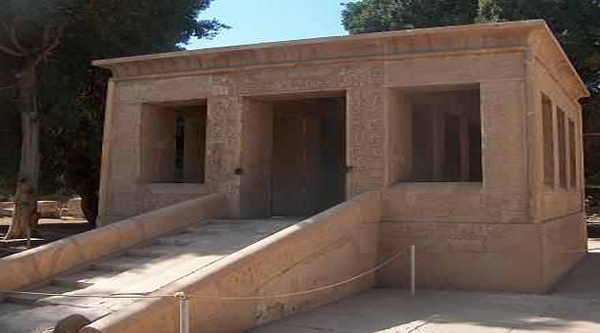White Chapel of Senusret I : description, facts, history
4.4 / 5 222 ReviewsAddress
Location: Inside Karnak temple
Accessibility
Not wheelchair friendly
Originally built by Senusret I - 1971 BC to 1926 BC and destroyed by: Amenhotep III - 1390 BC to 1352 BC
The white chapel was a small limestone bark shrine built by one of the earliest known kings to add to the temple of Amun-Ra at Karnak. The shrine has four interior pillars surrounded by a peristyle of twelve pillars. Its decoration records the jubilee (heb-sed) festival of Senusret I in raised relief. Some traces of yellow paint still exist on the structure's cornices; red, blue, and white paint traces can be found on the columns and hieroglyphs. The sunk relief scenes on the east and west sides of the chapel’s base depict personifications of the Nile, lakes and other chapels. The north and south sides of the base record the nomes (the regional areas of ancient Egypt) and their measurements. Now located in the Open Air Museum at Karnak, scholars debate where the temple once stood in Antiquity. During the Middle Kingdom, the shrine may have remained outside the temple’s inner enclosure wall. The building was oriented on a North-South direction, with a stepped ramp on each side.
Measurements: The columns all measure 2.6m height and are 0.6m across and 0.6m deep. The platform on which the columns rest is 1.2m high and almost square at 6.8m by 6.5m.
The white chapel may originally have functioned as a festival kiosk where the king could sit on a double thrown. Holes in the floor between the four central columns indicate the use of poles to hang banners hiding the king from the public eyes. One scholar has suggested that after the end of the jubilee festival, statues of the king were placed in the kiosk to sit on the double throne.
During the reign of 12th Dynasty kings Amenemhat III or Amenemhat IV, the white chapel was converted into a bark shrine. The altar within the chapel today (not shown on the model) is of rose granite and probably dates to this time. Despite the change in function, the shrine probably remained in its original location, later subsumed within the festival hall of Thutmose II.
Construction materials: limestone
Destruction: Amenhotep III
The king dismantled the white chapel during his renovation of the area around the festival hall of Thutmose II and used it as fill in his newly constructed Pylon III.
